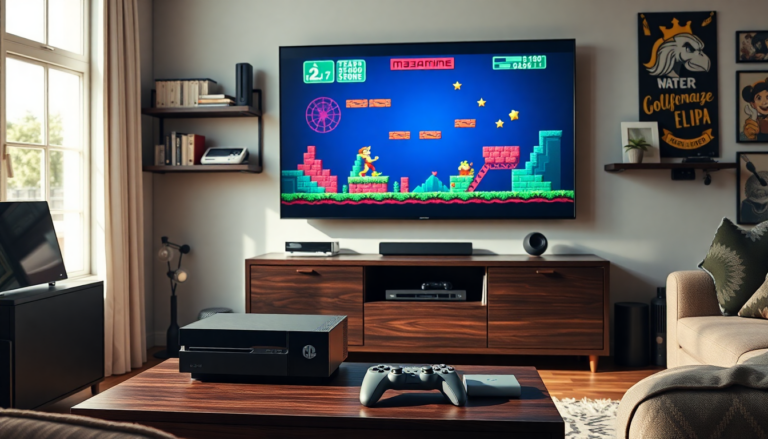Argomenti trattati
Gaming enthusiasts, have you noticed the exciting comeback of retro titles? Thanks to the leaps in emulation technology, players are now able to experience classic games on modern consoles, complete with enhanced performance, stunning graphics, and features that breathe new life into these beloved titles. But as thrilling as this revival is, it also comes with its own set of challenges that developers must tackle head-on.
What is Retro Game Emulation?
So, what does it mean to emulate retro games? In essence, it’s about recreating the original hardware’s functionality on today’s systems. This allows gamers to dive into nostalgic titles from consoles like the PlayStation, all while enjoying significantly better performance and new capabilities. Imagine being able to save your game at any moment or rewind gameplay to fix a misstep—luxuries that the original versions simply didn’t offer.
However, this process is fraught with technical challenges. One major hurdle is hardware compatibility. Each console has its own unique specifications and limitations, and developers must ensure that modern consoles can effectively replicate the original hardware’s behavior. Plus, performance optimization is key. Emulators need to run flawlessly, preserving the authentic experience while enhancing it at the same time.
Another challenge lies in rendering graphics at higher resolutions. Upscaling original pixel art without distortion is no easy feat. Additionally, managing state—how games save and load data—is crucial for maintaining continuity in gameplay. It’s a complex endeavor that requires a lot of expertise.
Expert Insights on the Landscape
To shed more light on this dynamic field, we turned to industry experts like Robin Lavallée, co-founder and Chief Gaming Officer of Implicit Conversions, and CEO Bill Litshauer. Their company specializes in emulating retro PlayStation games on modern platforms, and they shared some of the engineering challenges they face along the way.
“Our mission is to preserve the essence of these classic games while making them accessible to a new generation of players,” Lavallée expressed. He stressed the importance of balancing authenticity with innovation, ensuring that fans of the originals can enjoy a familiar experience without sacrificing quality.
Joining the discussion is Kevin Ball, known as KBall, the vice president of engineering at Mento. With a rich background in tech and multiple co-founded companies under his belt, KBall offers valuable insights into the technical intricacies that come with retro game emulation.
The Future of Gaming and Emulation
What does the future hold for retro game emulation? It looks bright as technology continues to advance. Developers are creating more sophisticated emulators, promising even more classic titles reimagined for modern consoles. The blend of nostalgia and innovation is capturing the hearts of both longtime fans and newcomers alike.
As cloud computing and AI technologies progress, the potential to enhance retro gaming experiences expands even further. Companies like Capital One are harnessing data and AI to improve user experiences across various sectors, including gaming. This technological synergy could pave the way for smoother emulation processes and richer gaming experiences.
As this trend gains momentum, it’s vital for the gaming community to rally behind these initiatives. By doing so, we can ensure that the rich history of video games is not only preserved but also celebrated as we embrace the future. The conversation around retro game emulation is just getting started, and its evolution is set to reshape the gaming landscape for years to come.

